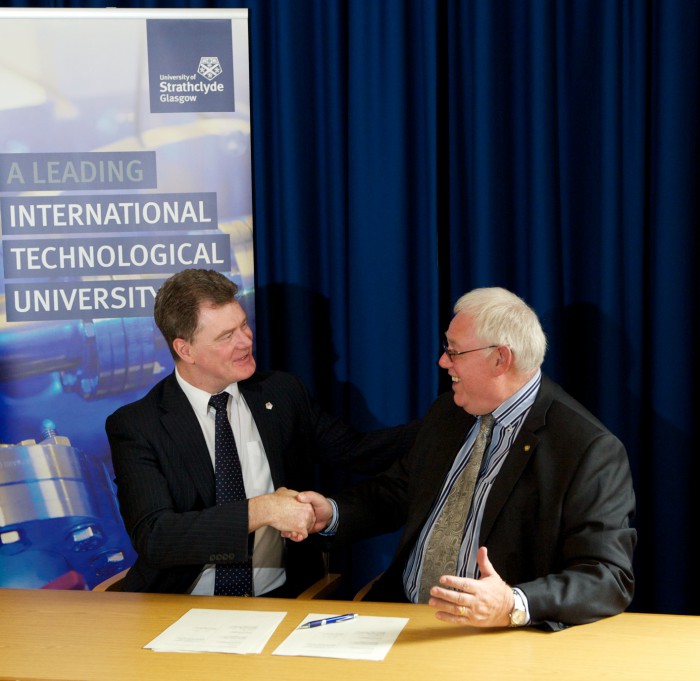11th July 2013 Ottawa, Canada
uStrathclyde and uDalhousie sign Wave and Tidal Energy MoU

The University of Strathclyde in Scotland signed a Tidal and Wave Energy research Memorandum of Understanding with Dalhousie University in Nova Scotia on the 5th of July. (See press release here)
 In a ceremony near Glasgow, Scotland, members of the Scottish and Nova Scotia governments witnessed Strathclyde executive dean of engineering Scott MacGregor and Dalhousie head of mechanical engineering Michael Pegg finalize the agreement. This partnership will create a framework for these two leaders in marine energy research to share knowledge, best practice, and ease student exchanges.
In a ceremony near Glasgow, Scotland, members of the Scottish and Nova Scotia governments witnessed Strathclyde executive dean of engineering Scott MacGregor and Dalhousie head of mechanical engineering Michael Pegg finalize the agreement. This partnership will create a framework for these two leaders in marine energy research to share knowledge, best practice, and ease student exchanges.
Nicole Arbour has previously reported on some of our activities supporting wave and tidal energy. Marine energy technology is a form of renewable energy technology that aims to harness the flow of tides and the motion of waves to create useable electricity. Because tide and wave movement is so constant, it is potentially more reliable than wind and solar power. Wave and tidal energy technology is not yet used to power communities, but research partnerships like these could help move the technology to commercialization.
The UK has committed to deliver 15% of its energy consumption from renewable sources by 2020*. Marine and Tidal power are among the technology strategies the UK Government hopes will help it meet its target, and that’s why research partnerships like these are so important. The Prime Ministers of the UK and Canada have endorsed the Joint Declaration which outlines that the commercialization of marine energy technology is a priority area for close bilateral cooperation.
*UK Renewable Energy Roadmap, Department of Energy and Climate Change, July 2011.